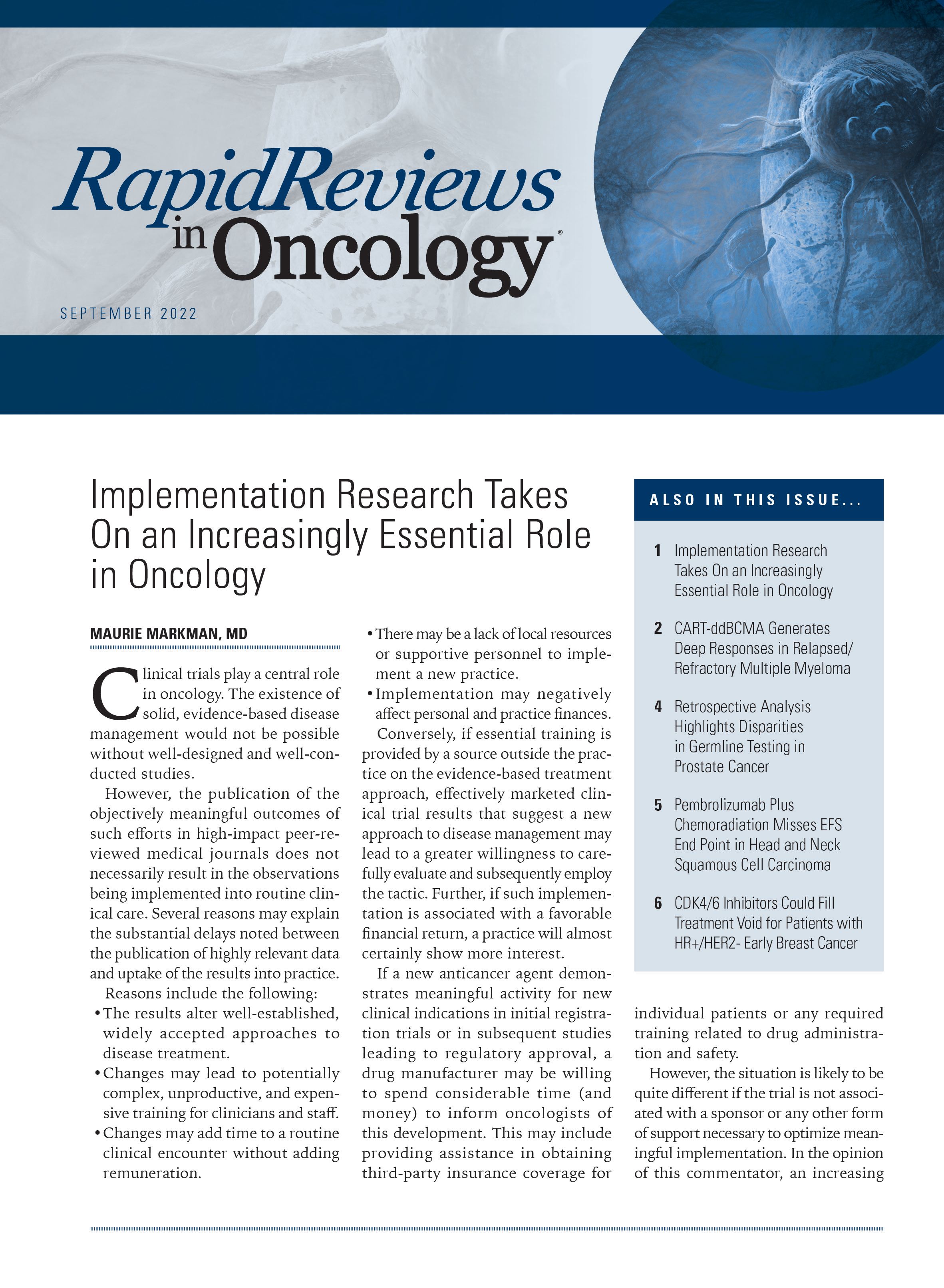Publication
Article
Pembrolizumab Plus Chemoradiation Misses EFS End Point in Head and Neck Squamous Cell Carcinoma
Author(s):
Pembrolizumab plus concurrent chemoradiation followed by pembrolizumab maintenance did not lead to a statistically significant improvement in event-free survival vs concurrent chemoradiation alone in patients with unresected locally advanced head and neck squamous cell carcinoma.
Eliav Barr, MD

Pembrolizumab (Keytruda) plus concurrent chemoradiation followed by pembrolizumab maintenance did not lead to a statistically significant improvement in event-free survival (EFS) vs concurrent chemoradiation alone in patients with unresected locally advanced head and neck squamous cell carcinoma (HNSCC), missing the primary end point of the phase 3 KEYNOTE-412 trial (NCT03040999).1
At the final analysis of the study, there was a numerical improvement in EFS in patients who received the addition of pembrolizumab, but the results did not meet statistical significance according to the prespecified statistical plan.
Full results from the study will be presented at an upcoming medical meeting.
“There have been limited advances for patients with locally advanced HNSCC and unfortunately, these results suggest that this disease remains very challenging to treat,” Eliav Barr, MD, senior vice president, head of global clinical development and chief medical officer, Merck Research Laboratories, said in a news release. “We are proud of the significant role pembrolizumab plays in the treatment of certain later stages of HNSCC, and we are committed to investigating pembrolizumab-based regimens for this debilitating type of cancer in earlier stages of disease. We are grateful to the patients and investigators for their participation in this study.”
KEYNOTE-412 is a randomized, double-blind, phase 3 trial evaluating pembrolizumab with concurrent chemoradiation, followed by pembrolizumab as maintenance therapy for the treatment of patients with unresected locally advanced HNSCC.2 The trial enrolled approximately 780 patients with newly diagnosed oropharyngeal or larynx/hypopharynx/oral cavity squamous cell carcinoma. Eligibility criteria stipulated patients be eligible for definitive chemoradiation, provide tissue for PD-L1 biomarker analysis, and have evaluable tumor burden and an ECOG performance status of 0 or 1.
Patients were excluded if they were currently participating or had participated in a study with an investigational agent or had used an investigational device within 4 weeks of the first dose of study therapy, had received prior therapy with a PD-1, PD-L1, or PD-L2 inhibitor or with an agent directed to another co-inhibitory T-cell receptor; had received a live vaccine within 30 days prior to the first dose of study therapy, and had prior systemic therapy, targeted therapy, radiotherapy treatment, or radical surgery for head and neck cancer.
The primary end point of the study was EFS, and key secondary end points included overall survival and safety.
Investigators randomly assigned to 200 mg of pembrolizumab every 3 weeks in combination with cisplatin and radiation, followed by pembrolizumab as maintenance therapy for approximately 1 year or placebo plus cisplatin and chemoradiation, followed by placebo.
Investigators will continue exploring pembrolizumab alone and in combination with other agents, including in the phase 3 KEYNOTE-689 trial (NCT03765918). Investigators in that trial evaluating the agent for neoadjuvant and adjuvant treatment in patients with resectable locally advanced HNSCC.
References
- Merck provides update on phase 3 KEYNOTE-412 trial in unresected locally advanced head and neck squamous cell carcinoma. News release. Merck. July 20, 2022. Accessed July 20, 2022. https://bit.ly/3zj8j1K
- Study of pembrolizumab (MK-3475) or placebo with chemoradiation in participants with locally advanced head and neck squamous cell carcinoma (MK-3475-412/KEYNOTE-412). ClinicalTrials.gov. Updated July 1, 2022. Accessed July 20, 2022. https://clinicaltrials.gov/ct2/show/NCT03040999








